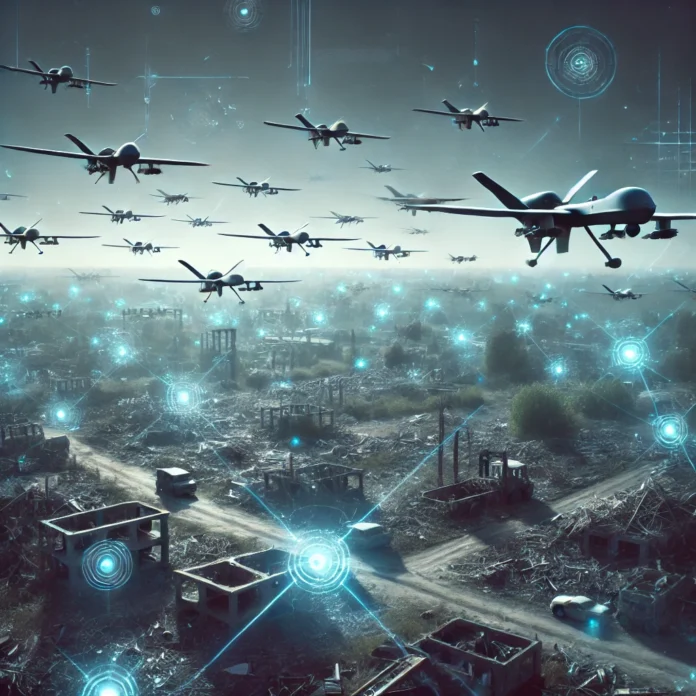The ongoing conflict in Ukraine has marked a turning point in modern swarm warfare with the deployment of AI-powered drones by both Ukraine and Russia. These drones, capable of autonomous decision-making and coordinated attacks, represent a new era in military technology. As drone swarms become more advanced, they are reshaping battlefields, bringing both advantages and significant challenges.
The Role of AI Drones in Ukraine’s War Strategy
Ukraine’s drone development has accelerated since Russia’s full-scale invasion, with more than 200 tech firms focusing on creating AI systems that enable drones to identify targets and work in swarms. Companies like Swarmer have emerged as leaders in this space, developing software that allows drones to communicate and operate in real time without direct human control. This technology offers unprecedented speed and precision in military operations.
Challenges Facing AI Drones
Despite the success of AI-powered drones, there are several significant challenges. Both Ukraine and Russia have ramped up Electronic Warfare (EW) efforts, deploying signal jamming systems that interfere with drone communications. Russia has developed creative anti-drone strategies, including the use of their own drones, as seen in their methods to intercept suicide drones. However, ethical concerns remain about autonomous weapons systems that exclude human decision-making in lethal situations.
Iran-Russia Drone Alliance
Russia’s reliance on foreign drone technology has been well documented, with Iran supplying Shahed-136 drones to Russia, greatly enhancing its military capabilities in Ukraine. The collaboration was exposed through a leak revealing that these drones were supplied in exchange for gold, as detailed in the gold for drones alliance. These drones have been used in targeted strikes across Ukraine, further escalating the conflict.
Why Swarm Drones Matter
Swarm drone technology represents the next phase of drone warfare. Coordinated drone swarms can overwhelm enemy defenses, operating with greater efficiency than traditional unmanned aerial vehicles (UAVs). The potential involvement of countries like China has raised concerns about increasing foreign intervention, as discussed in China’s secret drone collaboration with Russia. The ability to deploy drones on a large scale raises questions about the ethical use of such technologies, as well as the implications for global security.
Future Implications of AI in Warfare
The success of AI-powered drones in Ukraine could influence military strategies worldwide. Countries like China are already exploring similar technologies, and the ongoing conflict has shown how effective drones can be when used on a large scale. As AI-driven systems continue to evolve, there may be a shift in global power dynamics, with nations that develop advanced drone capabilities gaining a significant advantage in future conflicts.

Conclusion: A New Age of Autonomous Warfare
The shaky rise of AI drones in Ukraine signals a shift in how wars are fought. Autonomous drones, capable of swarming and coordinating attacks, represent a new frontier in warfare. While these technologies offer strategic advantages, they also bring new challenges related to ethics and global security. The use of drone swarms in Ukraine could pave the way for more widespread adoption of AI-driven military technologies in the years to come.


